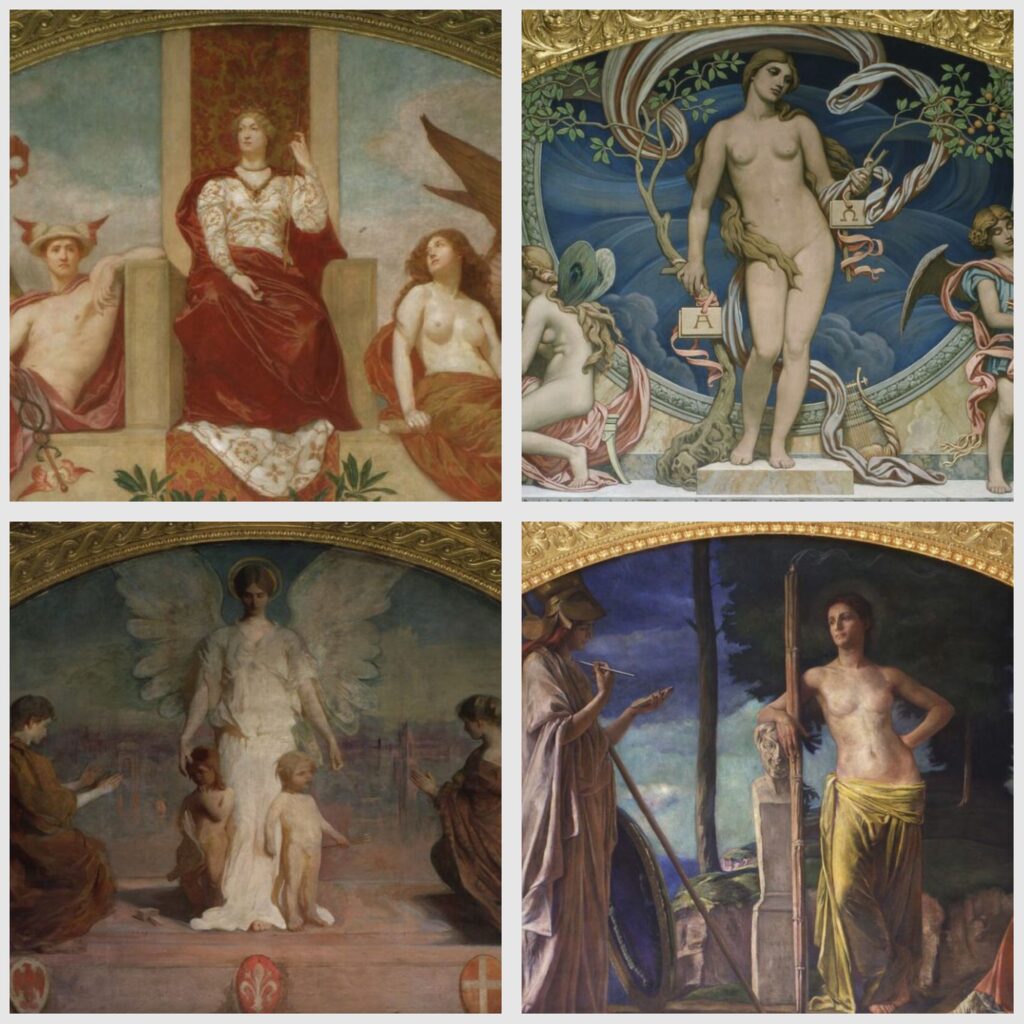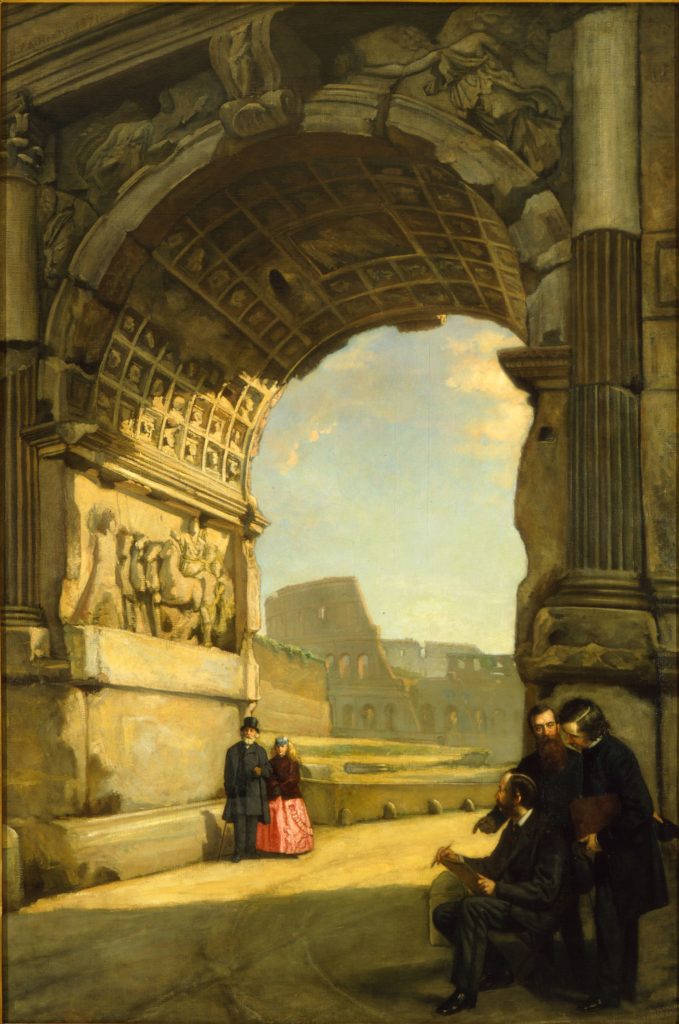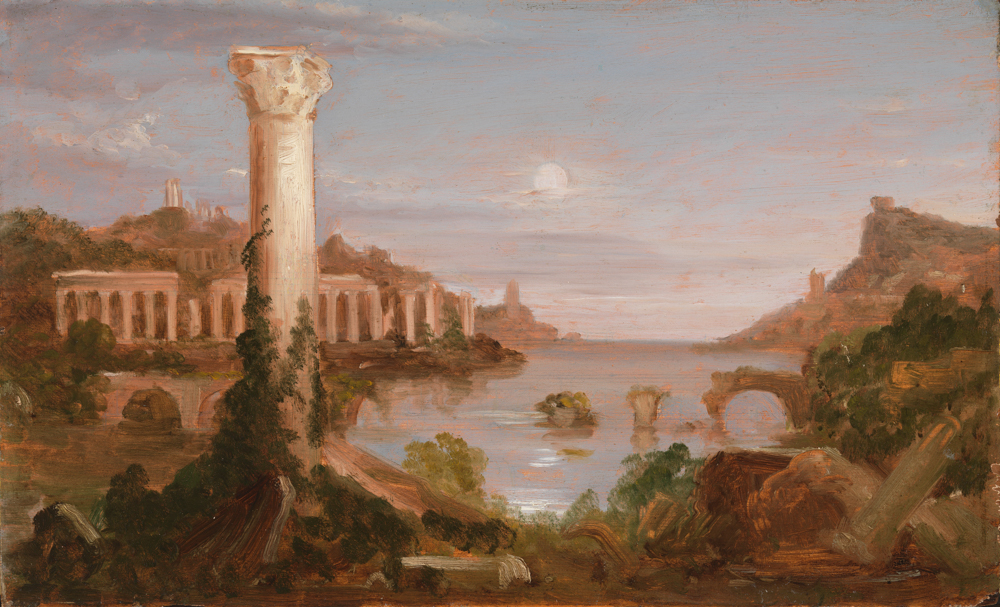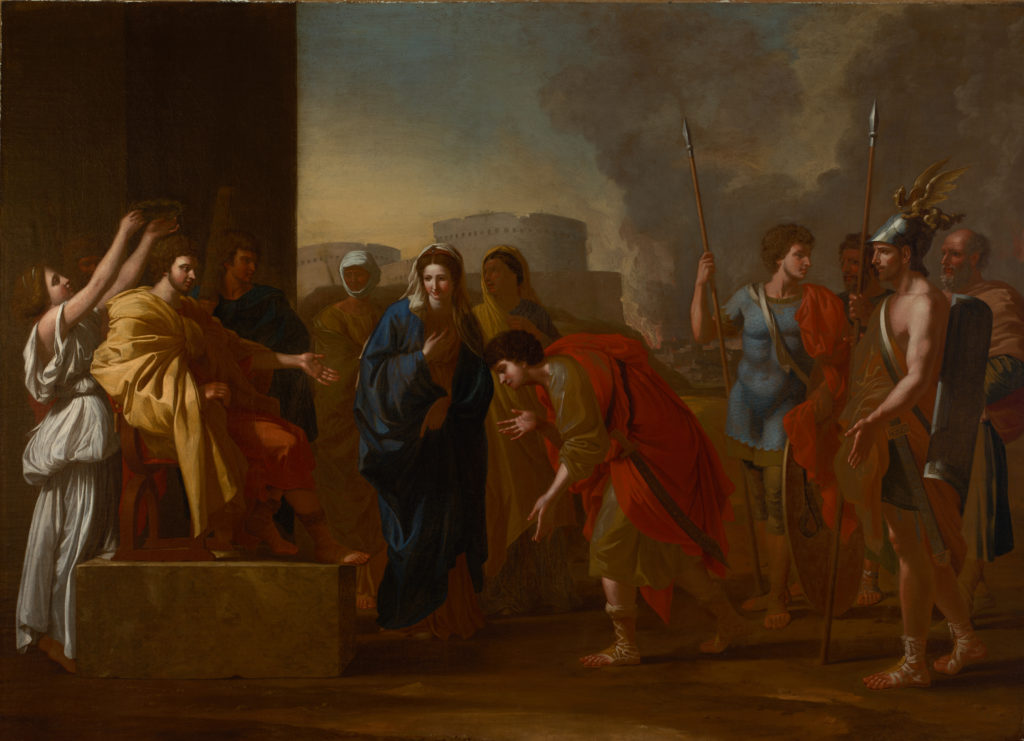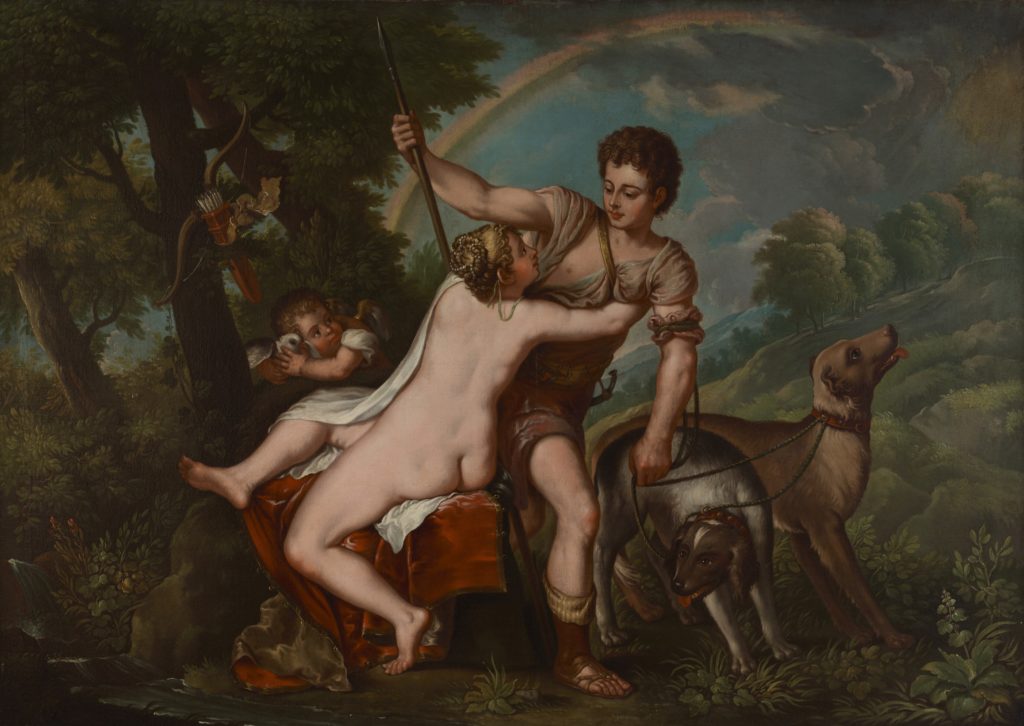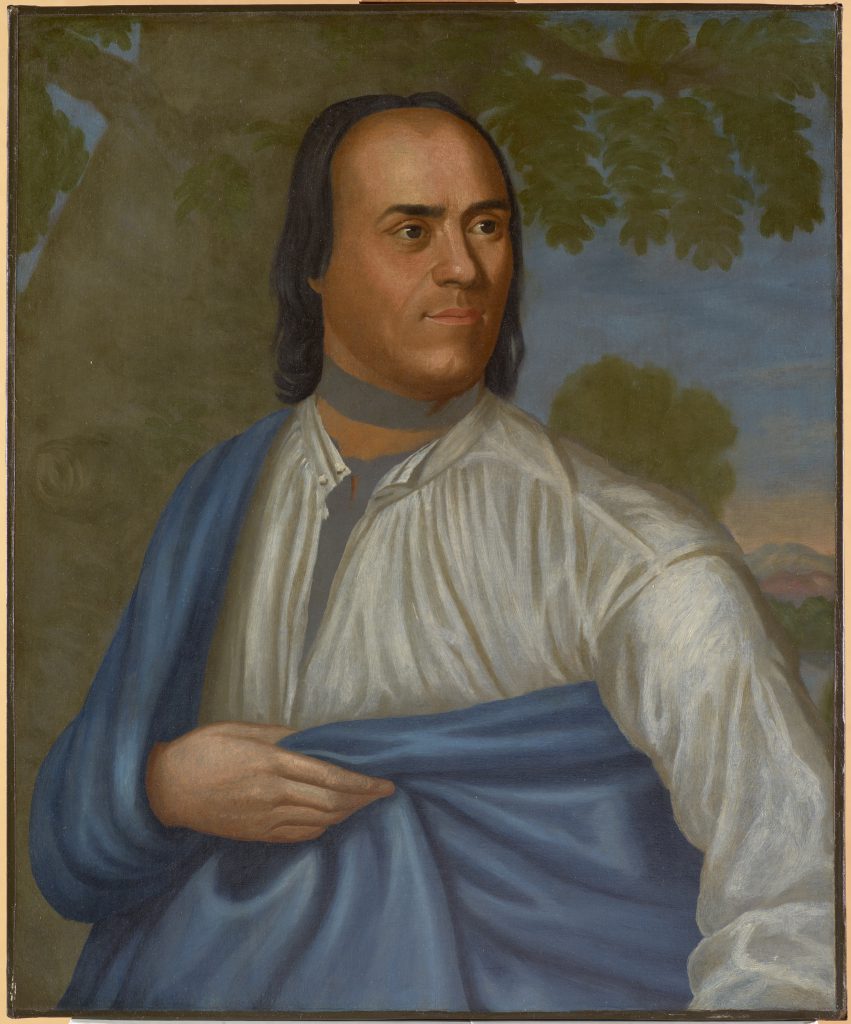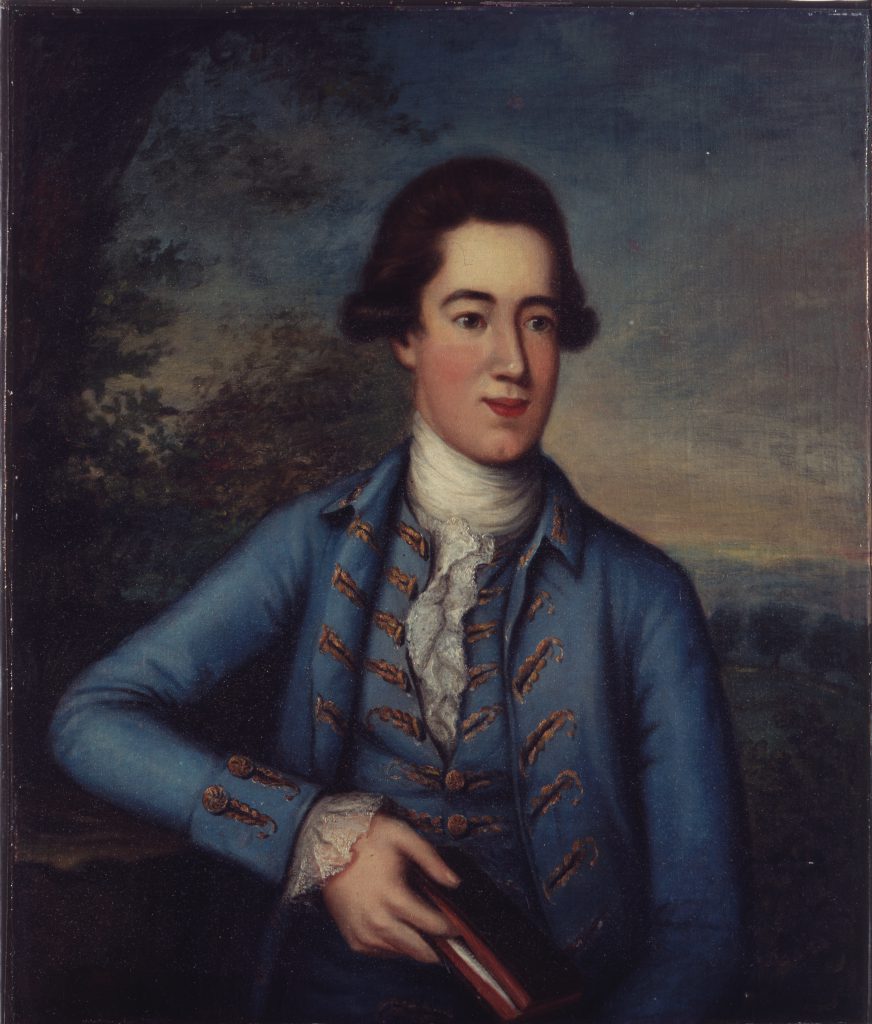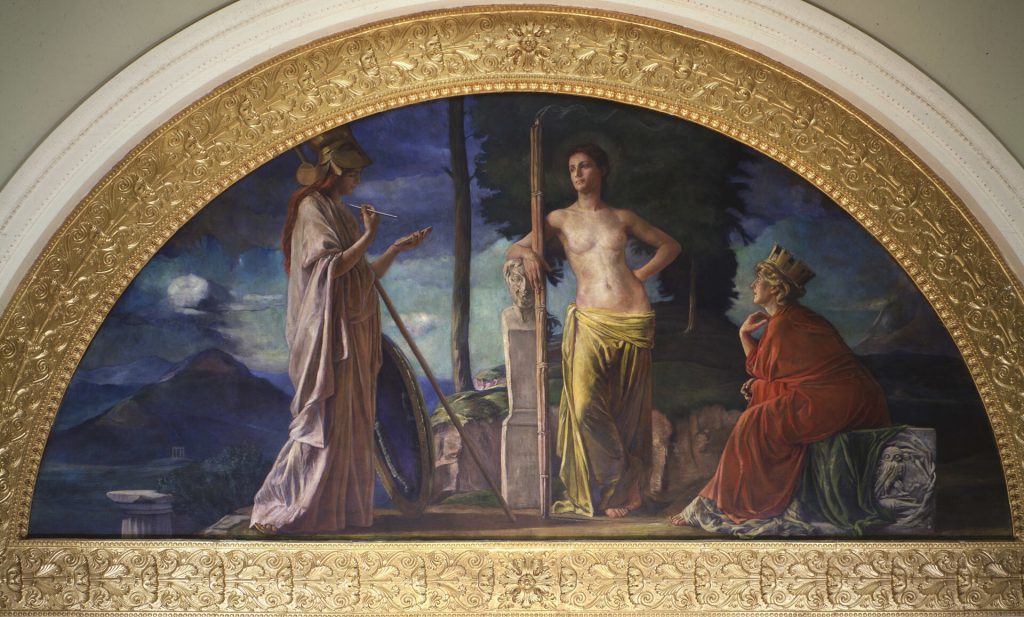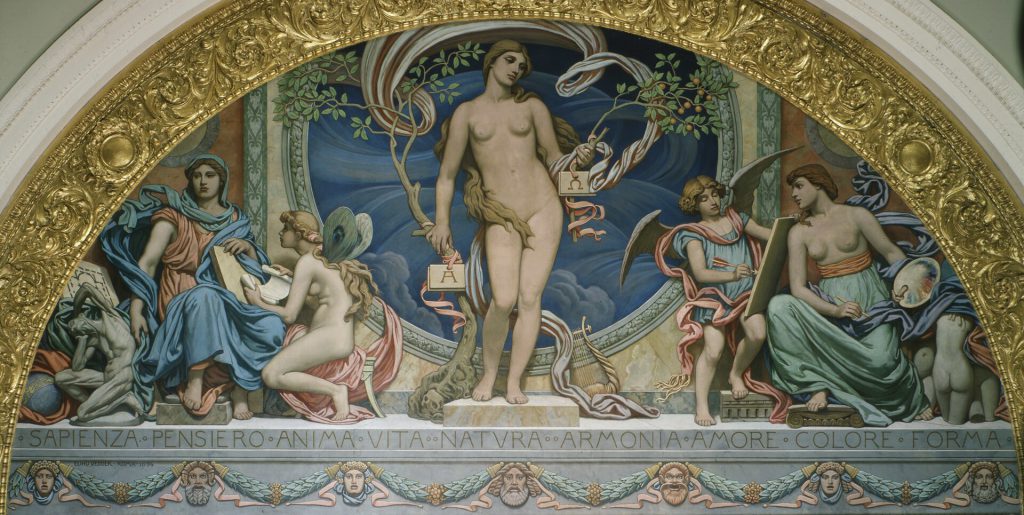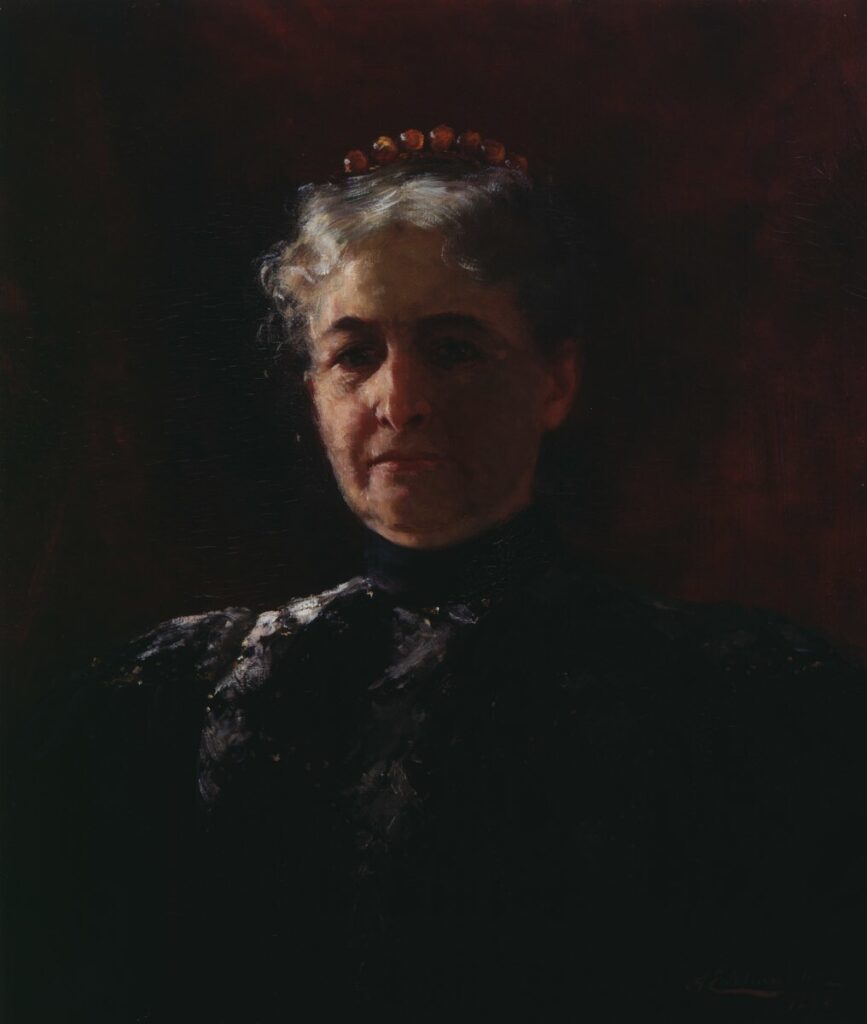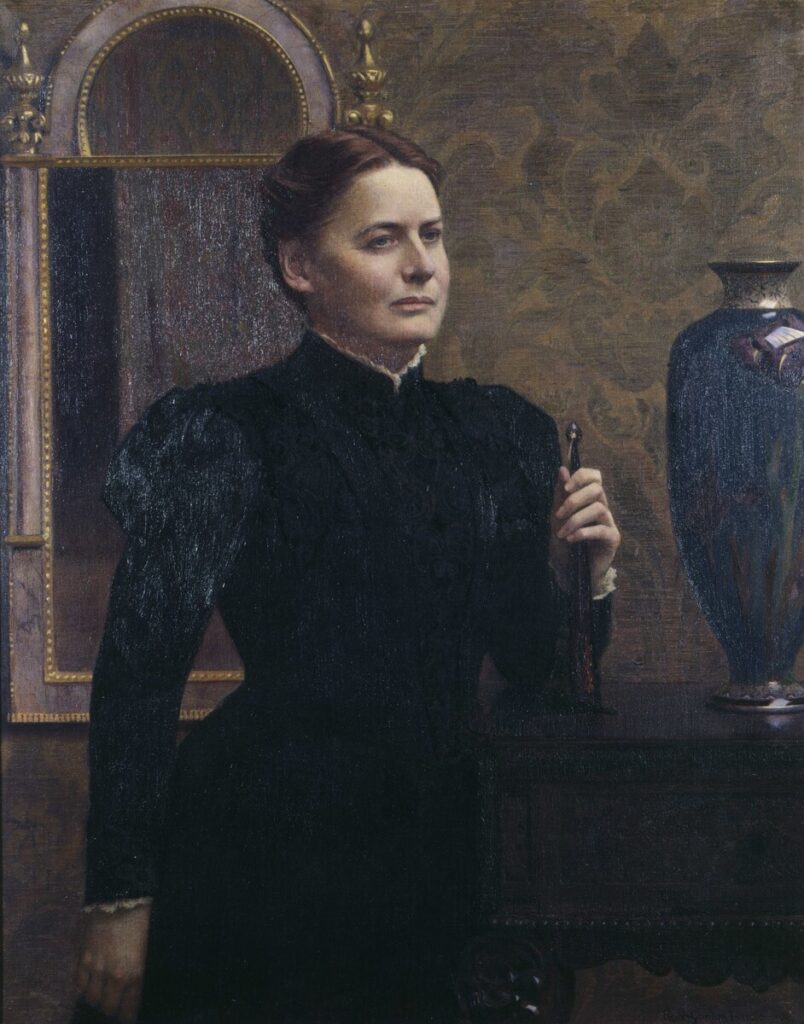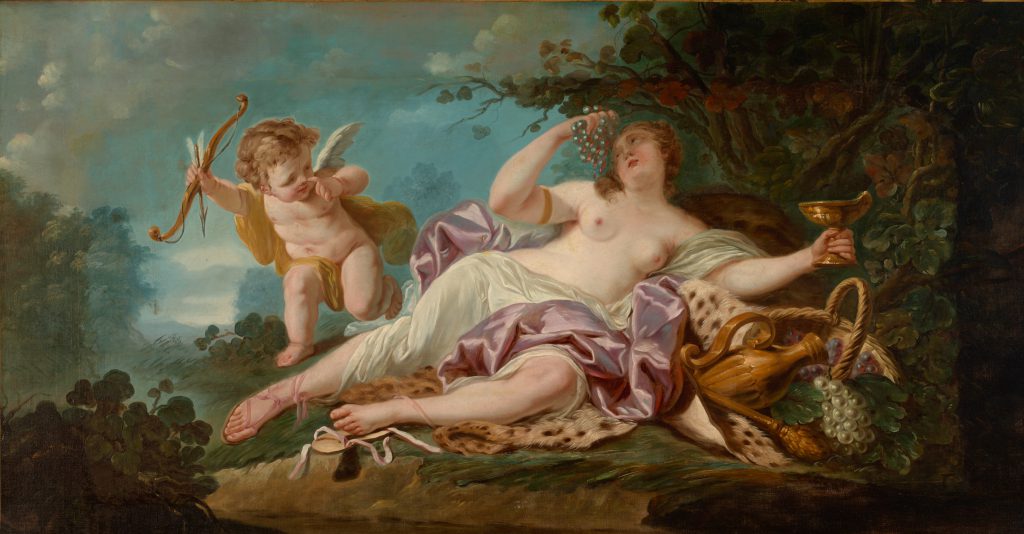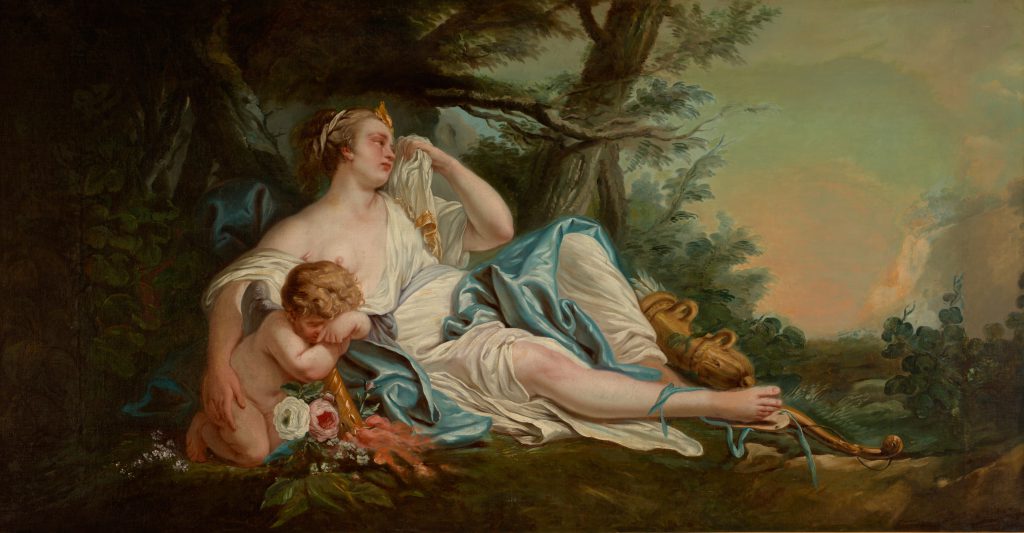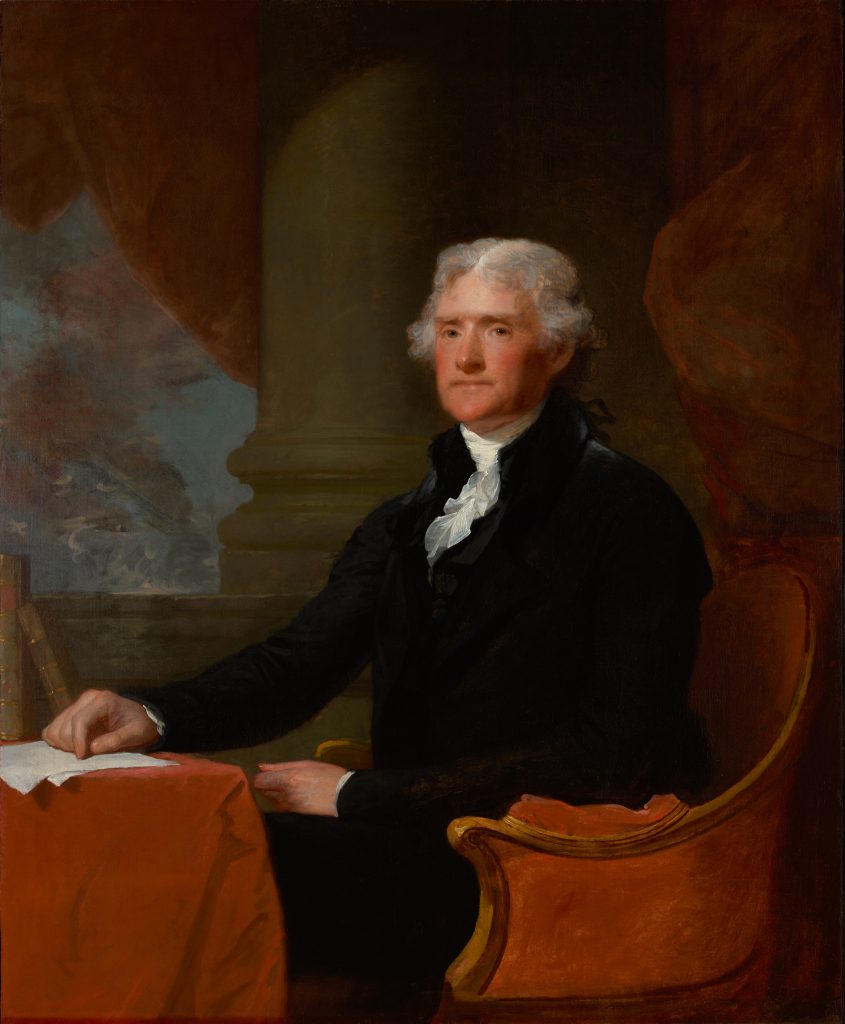
Bequest of the Honorable James Bowdoin III
1813.55In this iconic painting by the American portraitist Gilbert Stuart, Thomas Jefferson is shown against a classical backdrop with ionic columns framing the composition. These architectural details allude to the classical foundations of the American project: the democratic ideals and republican political system that Jefferson and his peers derived largely from knowledge of Greek and Roman history. Jefferson began studying Greek and Latin text at the age of five, and he cultivated a lifelong taste for antiquity that appears in his travels, his architectural designs, and the collections held at Monticello, the home he built for himself in Virginia. While the classical references in this painting are subtle, they are part of a trend in American portraiture of the nineteenth century to depict prominent Americans in classicizing modes.
The painting’s backstory is still more illuminating. James Bowdoin III and Jefferson were personally acquainted, and Bowdoin greatly admired Jefferson, feeling a kinship with his interest in art and culture. After Jefferson appointed Bowdoin the United States’ Minister Plenipotentiary to the Court of Spain in 1805, Bowdoin commissioned Gilbert Stuart to paint this official likeness of the President as well as the portrait of Secretary of State James Madison for display in his new Madrid residence. Bowdoin also offered his services to the President in acquiring paintings and sculptures while abroad, something he was familiar with based on his previous travels and study of Old Masters. Shortly before his departure for Europe in 1804, Bowdoin presented to Jefferson a marble copy of an antique sculpture in the Vatican’s collection that he believed to represent the Egyptian queen Cleopatra (later identified as Ariadne). The gift remains at Jefferson’s classically inspired home, Monticello, as a testament to both his and Bowdoin’s deep, lifelong engagement with antiquity.
Like Bowdoin and most elite Americans of the eighteenth and nineteenth centuries, Jefferson began studying Greek and Roman texts in their original language as a schoolboy. Throughout his life, Jefferson cultivated many passions, but among them was an abiding interest in the classical past and neoclassical architecture. Over the course of his career and travels, Jefferson built a library with deep holdings in ancient authors whose texts were his constant companions throughout his political career. He also made use of his time as Minister to France to visit the Roman ruins of Nîmes, making careful studies of the Roman temple Maison Carée and enlisting the French artist and neoclassical architect Charles-Louis Clérisseau (1721–1820) to help design the Virginia State Capitol after this ancient model. Jefferson’s other experiments in architecture, including his own plantation Monticello and his designs for the University of Virginia, show a similar debt to Roman architecture. Jefferson also had plans (never realized) to furnish Monticello with a sculpture hall filled with copies of ancient Greek and Roman sculptures. The Ariadne gifted by Bowdoin in 1805 was as close as Jefferson came to fulfilling this dream.
Jefferson was deeply interested in the development of the fine arts in the United States. While travelling in England he befriended the American artist John Trumbull (1756–1843), inviting him to stay with Jefferson’s family in Paris and supporting Trumbull’s monumental history painting The Declaration of Independence, a version of which was later commissioned for the US Capitol Rotunda. In Paris, Jefferson also befriended leading neoclassical artists including Clérisseau, painter Jacques-Louis David (1748–1825), and the sculptor Jean-Antoine Houdon (1741–1828). On numerous occasions Jefferson tried to forge transatlantic connections between the neoclassicism he encountered in France and the emerging American arts. In addition to commissioning Clérisseau for the Virginia State Capitol, Jefferson was responsible for commissioning the statue of George Washington from the French sculptor Houdon. The statue bears subtle but significant allusions to Roman history and the ancient world and resides today in the rotunda of the neoclassical Virginia State Capitol building that Jefferson designed with Clérisseau.
Collector
The son of the wealthy merchant and second governor of Massachusetts, James Bowdoin II, Bowdoin figured among a small group of leading figures who recognized the value of art in fostering enlightened ideals and philosophical contemplation among a budding republic.

